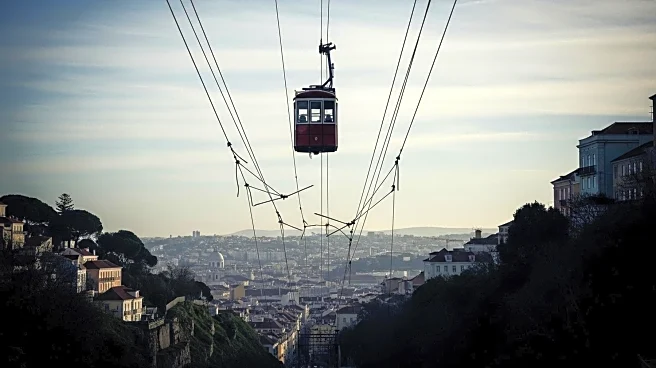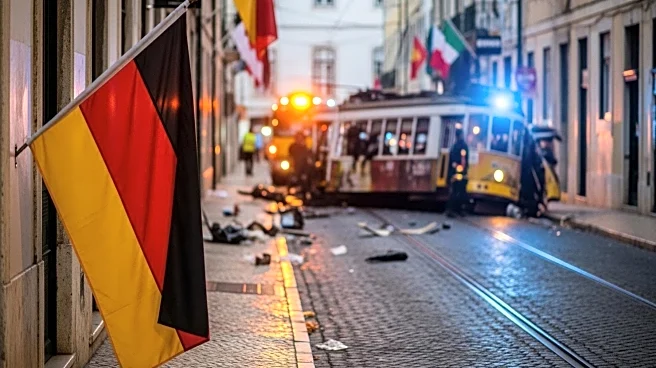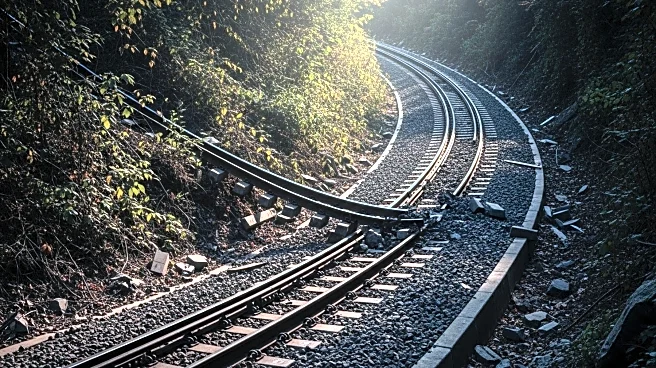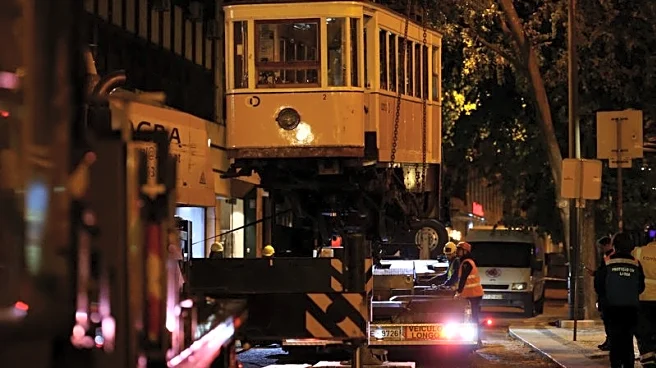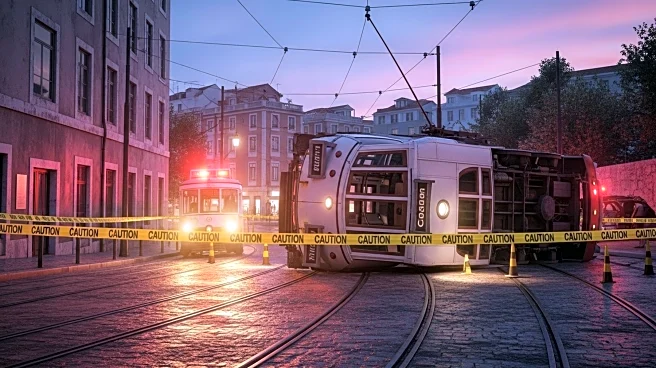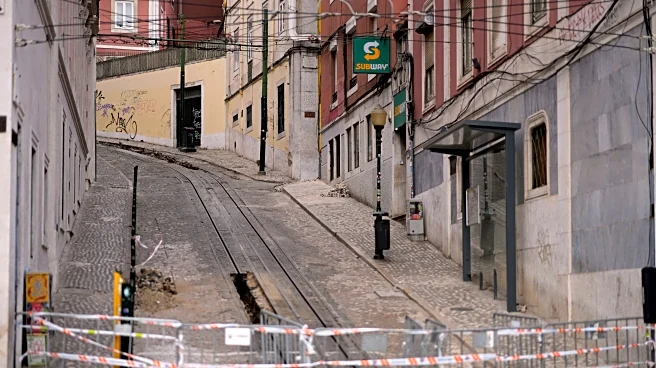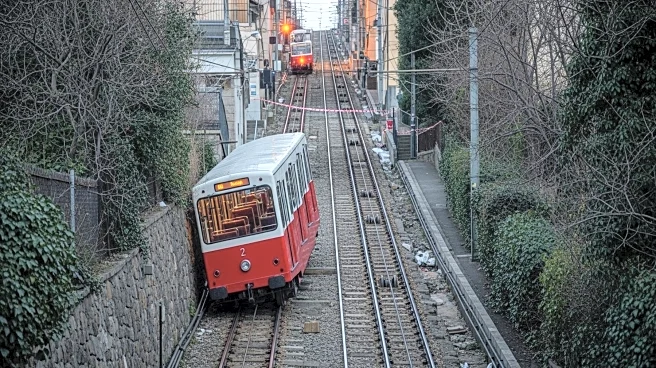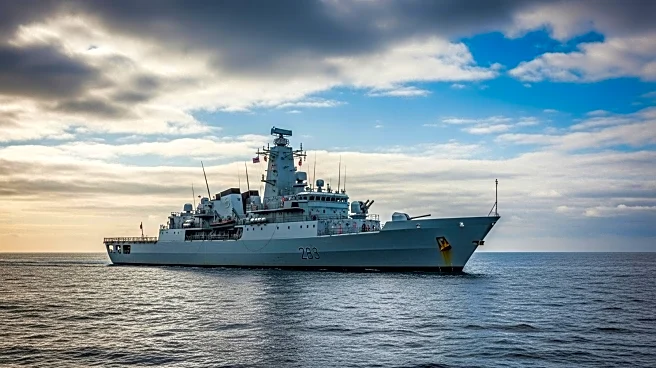What's Happening?
A tragic accident occurred in Lisbon when a funicular's cable snapped, leading to a derailment that resulted in 16 fatalities and 21 injuries. The incident took place on September 5, 2025, when the cable connecting two carriages broke shortly after departure, causing the runaway cabin to crash into a building. Among the deceased were 11 foreigners, including individuals from South Korea, Britain, Canada, Ukraine, the United States, Switzerland, and France, alongside five Portuguese nationals. The cable, which had been installed less than a year ago, was not due for replacement for another 263 days, according to a report by Portugal's railway and air traffic incident authority.
Why It's Important?
The derailment highlights critical safety concerns regarding infrastructure maintenance and oversight in public transportation systems. The incident has raised questions about the adequacy of safety checks and the reliability of equipment used in such systems. The loss of life, including international victims, underscores the global impact of transportation safety failures. This event may prompt increased scrutiny and regulatory changes in Portugal and potentially influence safety standards in other countries with similar transportation systems.
What's Next?
In the aftermath of the accident, there is likely to be a comprehensive investigation into the causes and contributing factors of the cable failure. Authorities may implement stricter safety protocols and conduct thorough inspections of similar transportation systems to prevent future incidents. The upcoming local elections in Lisbon could see transportation safety become a significant campaign issue, with incumbent Carlos Moedas potentially facing pressure to address public concerns and improve infrastructure safety.
Beyond the Headlines
The accident may lead to broader discussions on the ethical responsibilities of maintaining public transportation systems and the need for transparency in safety inspections. It could also trigger debates on the allocation of resources for infrastructure upgrades and the prioritization of passenger safety over cost-saving measures.
